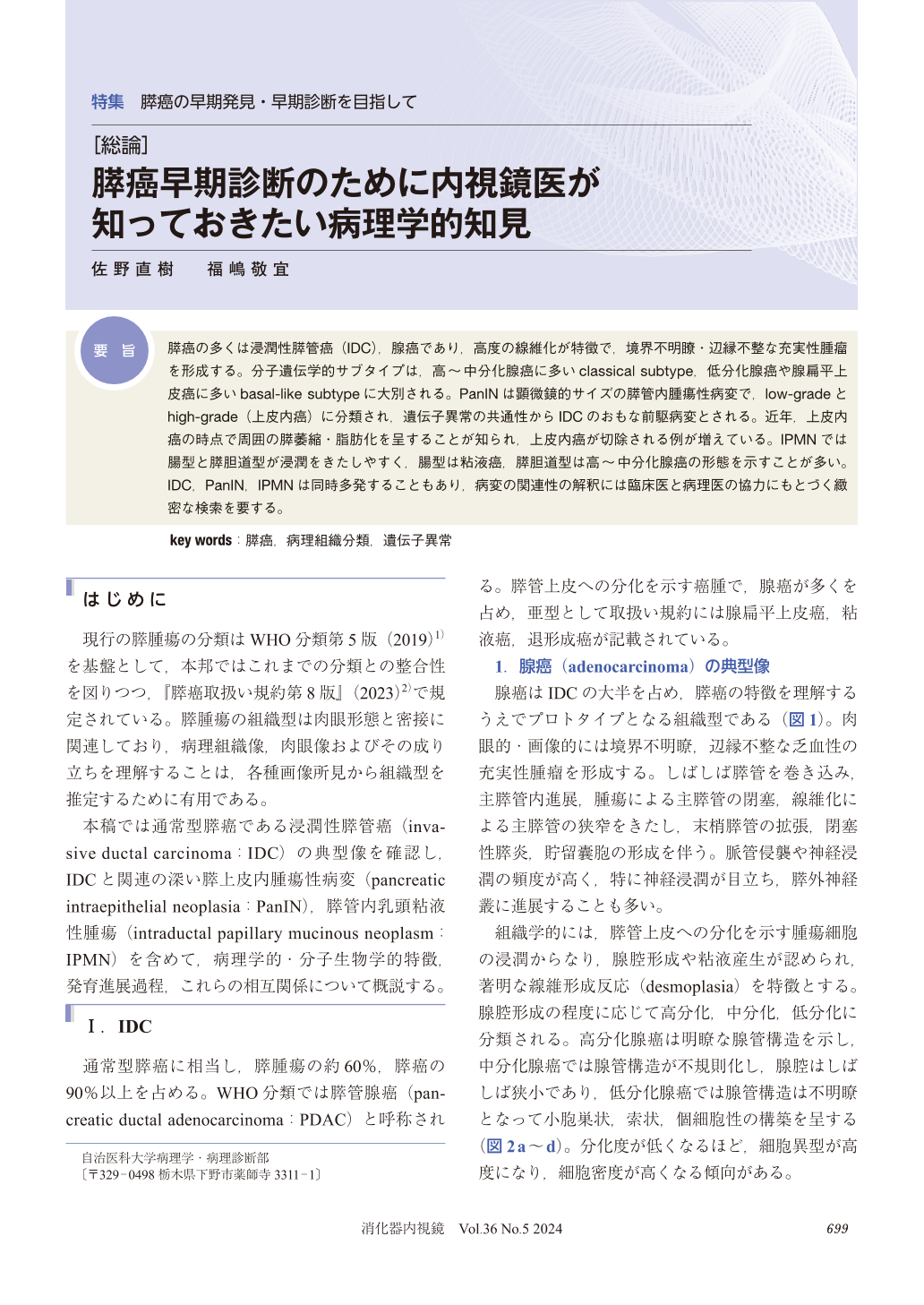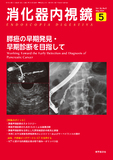Japanese
English
- 有料閲覧
- Abstract 文献概要
- 1ページ目 Look Inside
- 参考文献 Reference
要旨
膵癌の多くは浸潤性膵管癌(IDC),腺癌であり,高度の線維化が特徴で,境界不明瞭・辺縁不整な充実性腫瘤を形成する。分子遺伝学的サブタイプは,高~中分化腺癌に多いclassical subtype,低分化腺癌や腺扁平上皮癌に多いbasal-like subtypeに大別される。PanINは顕微鏡的サイズの膵管内腫瘍性病変で,low-gradeとhigh-grade(上皮内癌)に分類され,遺伝子異常の共通性からIDCのおもな前駆病変とされる。近年,上皮内癌の時点で周囲の膵萎縮・脂肪化を呈することが知られ,上皮内癌が切除される例が増えている。IPMNでは腸型と膵胆道型が浸潤をきたしやすく,腸型は粘液癌,膵胆道型は高~中分化腺癌の形態を示すことが多い。IDC,PanIN,IPMNは同時多発することもあり,病変の関連性の解釈には臨床医と病理医の協力にもとづく緻密な検索を要する。
The majority of pancreatic cancer cases consist of invasive ductal carcinoma (IDC), i.e., pancreatic ductal adenocarcinoma, whose characteristics are marked desmoplastic stromal reactions that contribute to forming a solid mass with irregular and obscure margins. Major molecular subtypes are classical and basal-like; the former is morphologically related to well- to moderately differentiated tubular adenocarcinoma, while the latter tends to show poorly differentiated adenocarcinoma and adenosquamous carcinoma. Pancreatic intraepithelial neoplasia (PanIN) is microscopic, noninvasive, and confined to the pancreatic ducts, and is subclassified into low- and high-grade types. High-grade PanIN is equivalent to carcinoma in situ. Since the genetic alterations share similarities with IDC, PanIN is considered the main precursor lesion of IDC. Recently it has been revealed that high-grade PanIN shows focal parenchymal atrophy and fatty replacement of the pancreas, leading to early resection before the development of invasive lesions. Among intraductal papillary mucinous neoplasms (IPMNs), intestinal and pancreatobiliary types are frequently associated with invasive carcinomas, especially mucinous carcinomas and tubular carcinomas, respectively. IDC, PanIN, and IPMN may concurrently exist in the same resected pancreas. In this situation, interpreting the relationship of each lesion requires detailed examination with close clinicopathological cooperation.

© tokyo-igakusha.co.jp. All right reserved.


